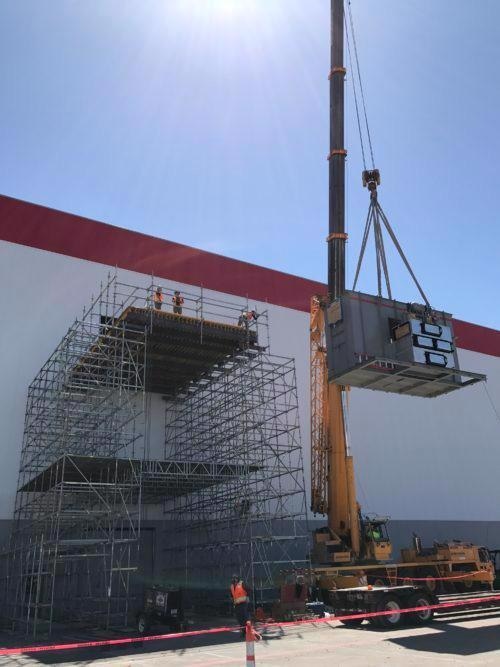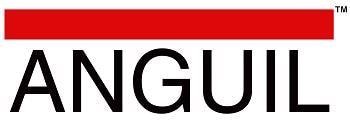Individuals, small companies and large corporations are all aiming to reduce their carbon footprints. As a result, the use of Lithium-Ion Batteries (LIB) has become progressively more widespread.
Where individuals are concerned, the utilization of battery packs in sectors such as solar-powered homes and all-electric automobile battery banks has been expanding at a rapid pace.
The manufacture of such battery packs generates a number of air contaminants that need to be treated preceding release into the atmosphere, however.
A major supplier of LIBs was confronted with a distinct array of challenges at its central production facility.
Three identical abatement systems were required, with each one needing the capacity to handle upwards of 35,000 scfm of emission-laden air, which is larger than the typical size of an electrically heated air pollution control system. The systems needed to factor in the following considerations:
- Low concentrations of hot and ambient air flows were involved as process gases.
- The presence of fossil fuels such as propane, fuel oil, natural gas, or diesel within the factory environment was prohibited.
- Each abatement application had to be placed indoors and on the third floor of the plant, which involved height and footprint restrictions.
The manufacturing process for complete LIBs involves a number of distinct operations and processes that produce a range of Hazardous Air Pollutants (HAPs) and Volatile Organic Compounds (VOCs) at differing temperatures.
Manufacturing the battery electrodes employs the use of N-Methyl Pyrrolidone (NMP). This is a solvent, but one which the manufacturer can recover and reuse without needing treatment in a pollution control process.
The supplier had further module manufacturing lines and a number of e-coat paint lines with curing ovens where a solvent recovery process was not an option. This led to complications in providing a compliance solution.

Image Credit: Anguil Environmental Systems
The Solution
The LIB supplier’s unique circumstances presented the challenge of creating a compliance solution whereby 70,000 scfm of emission laden air could be captured and treated while keeping to the following constraints:
- The solution needed to result in a minimum 90% reduction of overall air pollutants.
- Fossil fuels could not be utilized in any heating requirements.
- The solution needed to deliver an n+1 arrangement for system redundancy when maintenance was being performed.
- The solution had to reduce all utility consumption to the greatest magnitude feasible.
- The solution had to minimize its overall system height, weight and footprint, to fit within the constraints of the facility.
Anguil is among a small number of industrial air pollution control solution providers able to supply a full line of catalytic and thermal oxidizer technologies that also incorporate emission concentrators. The wide range of technologies offered by Anguil allowed the company to assess each option and evaluate its pertinency for the exacting project objectives.
The first step was the decision to route each and every ambient process air source to a zeolite concentrator wheel. The concentrator wheel uses a zeolite substrate to adsorb the HAPs and VOCs out of the process gases and onto the surface of the rotating wheel.
A heated stream of around 10% of the original stream volume is utilized to desorb the pollutants from the concentrator wheel. This highly concentrated stream significantly reduces the size and consequently the capital and ongoing operating costs of any downstream oxidizers that are integrated with the concentrator wheel.
Next, engineers from Anguil decided to employ Regenerative Catalytic Oxidizers (RCOs) with electric heating elements to treat the hot process stream from the curing ovens, as well the concentrated air stream from the concentrator wheel. This combination is frequently referred to as an RCTO.
The use of a catalyst inside a thermal oxidizer meant that destruction of emissions could occur at much lower temperatures; (600-800°F, 315-427°C) than would otherwise be the normal range (1400-1500°F, 760-816°C).
A lower operating temperature also allowed for a smaller and more dependable electric heating element in terms of physical size and kW rating.
An RCO utilizes ceramic blocks as the heat transfer media, allowing for 97% Thermal Energy Recovery (TER) from combustion. This combination of a lower operating temperature and a 97% TER meant the RCO was the optimal solution for keeping utility consumption to a minimum while guaranteeing a low maintenance operational regime.
As previously mentioned, each oxidizer system (three in total) and the concentrator wheel were to be positioned inside the building on the third floor. This had to be carried out while the building was under construction, on an existing mezzanine that allowed for 15’ of overhead clearance.
By factoring this into the design process, Anguil ensured every single piece could be raised three stories via an external elevator and would fit through a narrow overhead door.
Additionally, each of the three units was installed in-line and connected via common inlet and outlet manifolds, which led to a decrease in installation expenditure.
After installation, start-up technicians from Anguil completed the final commissioning process. The technicians performed operator training which consisted of classroom and ‘on skid’ sessions. Test data indicated that each of the three systems was achieving over 90% overall emission removal and 97% TER.

Image Credit: Anguil Environmental Systems
The Result
After listening to the customer’s needs and operational constraints, Anguil was able to provide an oxidizer system that could process up to 70,000 scfm of VOC-laden air without using fossil fuels, and all within a specific footprint and size requirement.
The use of the zeolite concentrator wheel on ambient temperature sources decreased the size of the downstream oxidizers needed, as well as associated utility needs.
Utilizing an electrically heated RCO removed the necessity for a fossil fuel-fired burner, which had been another customer requirement. A catalyst allows the oxidizer to operate at a much reduced temperature in comparison to a thermal oxidizer.
This, in turn, minimized the size of the electric heating element. As the RCO was delivering 97% TER, this led to a further reduction not only in utility requirements but also in the size of the heating element.
As the hot source from the cure oven was sent directly to the RCO inlet, there was no negative impact on either the operation or efficiency of the concentrator wheel.
The three identical systems capable of processing 35,000 scfm meant that the customer could process up to 70,000 scfm of VOC-laden air while keeping to the specified n+1 arrangement.
By designing each system to minimize the footprint and height to the maximum allowable parameters, the supplier was able to save on invaluable floor space inside the facility. The system's effectiveness and efficiency exceeded the design specifications set by the supplier.

Image Credit: Anguil Environmental Systems

This information has been sourced, reviewed and adapted from materials provided by Anguil Environmental Systems.
For more information on this source, please visit Anguil Environmental Systems.